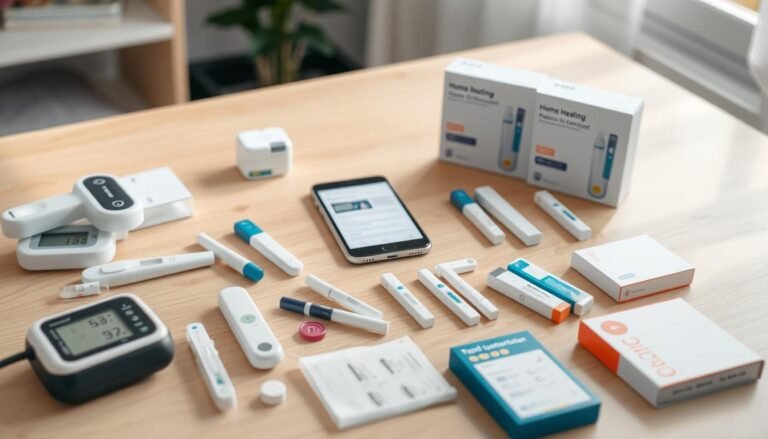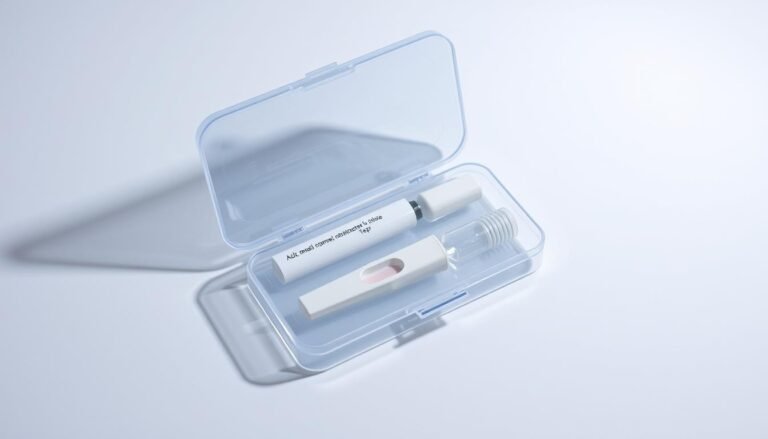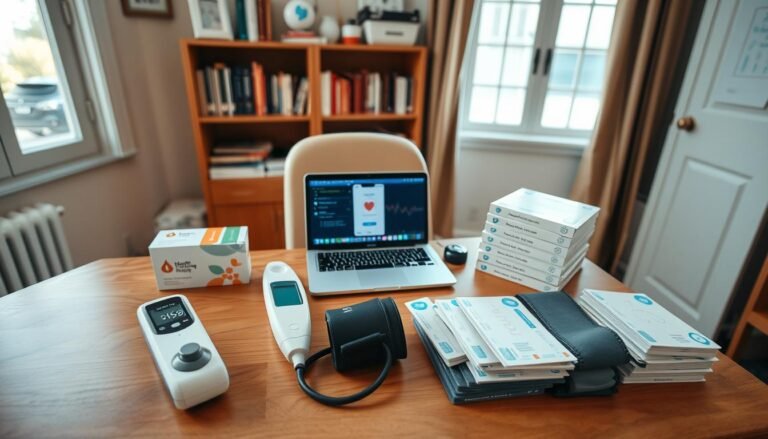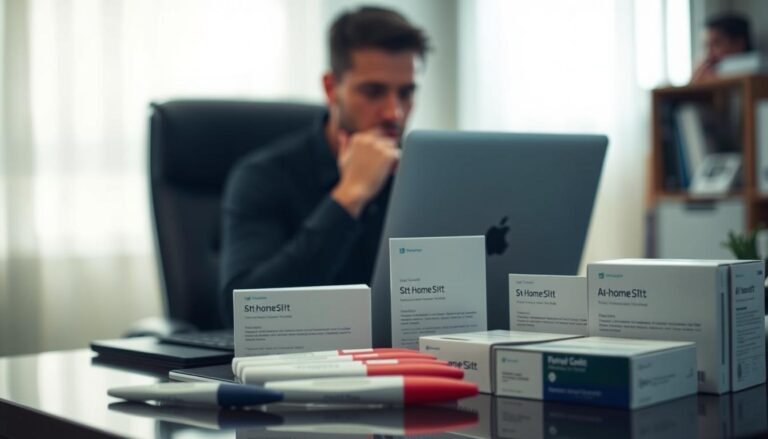How Accurate Are At-Home Blood Tests Compared to Lab Results
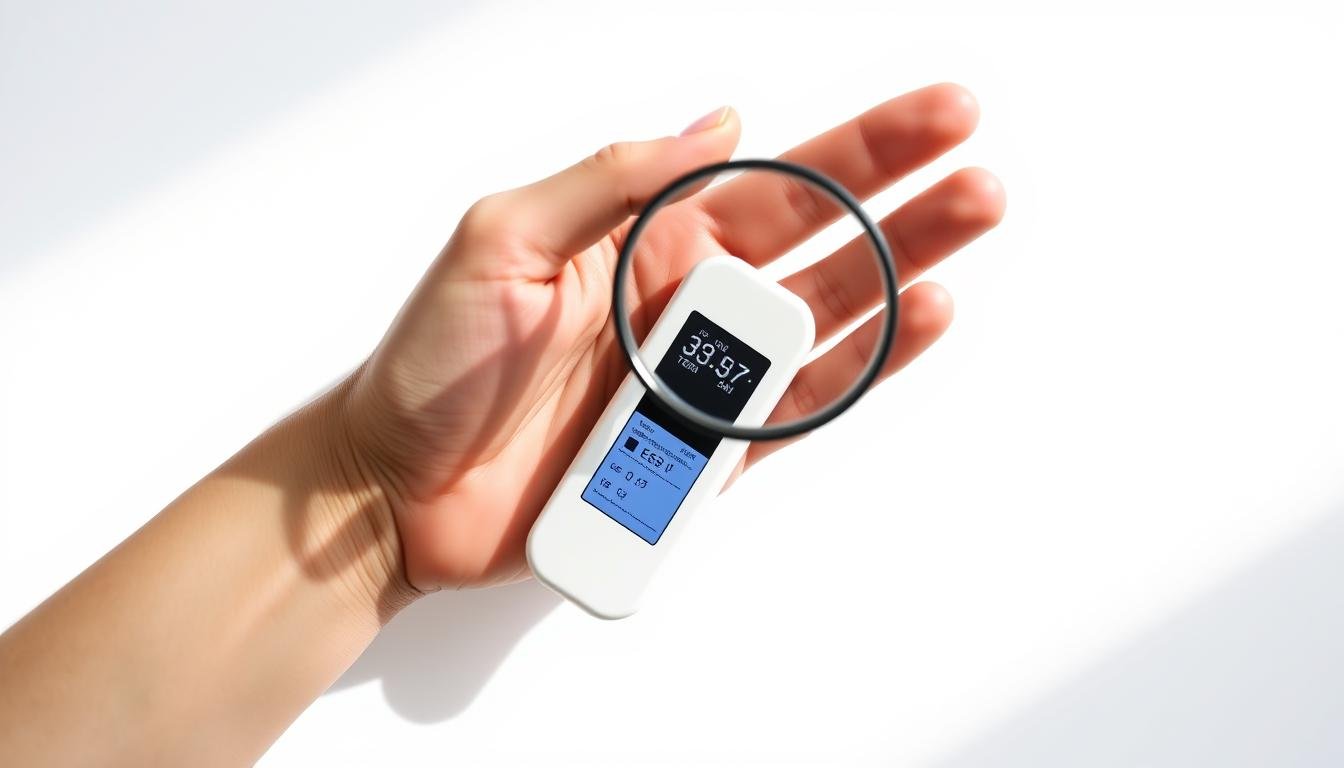
Can a kit we buy online or from a pharmacy match the precision of a clinical lab and change the way we make health choices in India?
We explore how instant-read self-tests and mail-in collection kits differ in design, regulation, and follow-up. Regulators now demand stronger evidence for higher-risk products, but user technique, timing, and storage still shape final results.
Some kits boost screening uptake by offering privacy and speed, yet subpar products have slipped through older rules. We explain why analytical precision and clinical performance in the intended group both matter more than marketing claims on a box.
When outcomes are unexpected or serious, confirmation in a lab remains wise. In this article we preview where home options serve us well—diabetes, pregnancy checks, and some infections—and where clinical confirmation is essential.
Why we’re asking about at home blood test accuracy right now
Recent years have seen a rapid rise in consumer diagnostic kits. We now find tools for glucose checks, pregnancy screening, infectious disease checks, and even preliminary cancer screening available online and in pharmacies.
That expansion means more people are doing quick testing outside clinics. Digital sales and easier pharmacy access have made it simple to act fast when health concerns arise.
Public health bodies and the department health issue guidance that stresses use of authorised products and careful following of instructions. At the same time, articles and reviews show variable performance across commercial offerings.
- Surge in consumer kits across many conditions.
- Greater public demand for speed and privacy.
- Regulatory updates aim to tighten clinical standards and transparency.
| Driver | Main concern | Regulatory response |
|---|---|---|
| Convenience | Variable information quality | Stricter approvals |
| Access | Inconsistent performance for some diseases | Clearer labeling and evidence required |
| Speed | Need for confirmatory test for serious findings | Guidance on follow-up care |
For India, the balance matters. Convenience and speed help many, but care pathways still rely on lab confirmation for significant results. We flag these issues so readers can make informed choices and know when to seek clinical follow-up.
What counts as an at-home test versus a lab test
We separate offerings into two clear types so readers know what to expect from purchase to result. One gives instant, on-device feedback; the other asks us to collect and send a sample for professional processing.
Self-test kits with instant results
These kits let us collect a small body fluid — capillary blood, urine, or saliva — and apply it to a device that shows a readout within minutes. They prioritize speed and ease for screening like glucose checks or pregnancy indicators.
Box contents often include lancets, swabs or strips, a small reader or cassette, and simple instructions. Many are sold over the counter, but choosing the right type matters for clinical usefulness.
Self-collection kits that send a sample to a laboratory
Self-collection kits ask us to take a specimen, package it with stabilizers, and mail it using prepaid packaging to a laboratory. The lab runs professional assays and returns interpreted results via a portal or provider.
Mail-in options can cover broader panels and use validated lab workflows, but proper collection, storage, and timely shipment are essential to preserve sample integrity.
- Instant-read devices: speed and convenience; limited analyte range.
- Mail-in kits: wider panels and lab-based interpretation; require careful collection.
- Provider input helps choose the right kit and arrange follow-up when needed.
| Feature | Instant kits | Mail-in kits |
|---|---|---|
| Result time | Minutes | Days |
| Common samples | Capillary blood, urine, saliva | Capillary blood, venous-like stabilised samples |
| Use case | Rapid screening | Comprehensive panels and confirmatory analysis |
How at-home blood tests work from purchase to report
Understanding the steps between ordering a kit and getting results helps us avoid common mistakes. Below we map the routine so readers know what to expect and where errors often occur.
Common sample types and collection steps
Most self-use workflows use a fingerstick with a lancet and collecting a capillary blood sample on a strip or card. Some kits ask for first-morning urine for better detectability, while others accept nasal swabs for rapid antigen use.
For fingersticks we warm hands, clean the site, use the lancet, and apply the precise drop to the device. Use only supplied materials and follow the printed instructions exactly.
Result delivery and what to expect
Instant-read devices show a windowed result within minutes; read it in the stated time to avoid invalid reads. Mail-in samples require drying, sealing with desiccant, labeling, and prompt shipping to protect stability.
- Check authorisation and specimen match before purchase.
- Retain barcodes, logins, and shipment receipts for the report.
- Seek clinician follow-up for any unexpected or borderline results.
| Step | Instant kits | Mail-in kits |
|---|---|---|
| Collection | Fingerstick or swab | Card or stabilized vial |
| Result time | Minutes | Days (portal or provider) |
| Follow-up | Self or clinician | Clinician review recommended |
Defining accuracy: analytical precision versus clinical performance
Different measures of performance tell very different stories about how reliable a result will be in everyday use. Analytical performance measures how repeatable an assay is at detecting a specific analyte under controlled conditions. Clinical performance measures whether the same method correctly identifies a disease in the intended population.
Sensitivity, specificity, and predictive values in real-world use
Sensitivity and specificity describe how often a method finds true positives and true negatives in a study group. But positive and negative predictive values change with prevalence. In low-prevalence self-screening groups, fewer positive results will be true positives.
User technique, timing, and sample handling can erode analytical precision even when the assay is solid. Cutoffs, interference checks, and internal quality controls matter for translating bench numbers into reliable results.
- Analytical accuracy: repeatable measurement of an analyte.
- Clinical performance: correct identification of disease in intended users.
- Look beyond single numbers to instructions, stability, and follow-up pathways to reduce residual risk.
| Measure | Lab (bench) | Real-world implication |
|---|---|---|
| Precision | High under controlled runs | May fall with poor collection or storage |
| Predictive value | Depends on study prevalence | Falls in low-prevalence screening populations |
| Regulatory review | Manufacturer data often used | Independent review needed for clinical utility |
Pros of at-home testing for people in India
Quick personal screening options offer clear gains for many urban and semi-urban communities. We can reach decisions faster, reduce travel, and protect privacy while managing routine health needs.

Convenience, privacy, and faster action on health decisions
For busy workers and caregivers, saved time and simpler access matter. We can check common markers without long waits and then plan the next step.
Privacy also matters for sensitive conditions. Some people are more likely to seek screening when they avoid crowded clinics and stigma.
Potential for higher screening uptake and earlier care
Evidence shows self-directed screening can double uptake in certain programs, helping identify issues earlier. That can reduce strain on clinics by preventing late-stage presentations.
- Less travel and fewer queues for routine checks.
- Faster results let us change diet or seek care sooner.
- Normal findings often mean fewer unnecessary appointments, while flagged results guide timely follow-up.
| Benefit | Who gains | Typical outcome |
|---|---|---|
| Speed | Busy urban people | Faster decision and referral |
| Privacy | Stigma-sensitive users | Higher first-time uptake |
| Access | Remote or crowded areas | Earlier detection and care |
Cons and risks we need to weigh
Rapid consumer access to self-collection kits brings clear benefits, but it also adds new layers of risk we must weigh.
User errors, false positives/negatives, and anxiety
User handling mistakes can create wrong results. Incorrect timing, poor specimen quality, or misreading lines all affect outcomes.
Such errors often cause false positives or false negatives. That leads to worry or false reassurance for many people.
Limited help materials make confusion worse. When instructions are unclear, anxiety and unnecessary calls to support rise.
Follow-up costs and repeat testing in clinical settings
Clinicians may repeat tests in a lab when they cannot trust a consumer result. That can add time and expense and erase any earlier savings.
Some conditions also need a physical exam or clinician judgment that no device can replace.
- Supply or storage problems in hot climates can degrade reagents and harm results.
- Manufacturer guidance usually urges users to seek medical advice before changing treatment.
- Knowing the limits of any device helps us plan sensible next steps and avoid harm.
| Problem | Likely impact | Recommended action |
|---|---|---|
| Poor collection | False result | Repeat with proper technique or visit a lab |
| Unclear result | Anxiety, repeat visits | Contact a doctor or local doctors for review |
| Heat exposure | Degraded reagents | Replace kit and follow storage advice |
If a concerning reading or unexplained symptom appears, we should contact a doctor promptly. Following manufacturer advice and seeking clinician input keeps care safe and practical.
At-home diabetes checks: glucose monitoring and A1c realities
Simple fingerstick meters deliver quick readings, but interpretation still needs care and context.
How fingerstick meters work and real‑world ranges
Meters use a tiny capillary sample on a strip and show a number in seconds. We warm and clean the fingertip, use the lancet, and apply the drop exactly as the manual directs.
Consumer devices often read within a small range of lab venous values, but results vary by model and conditions. Typical consumer performance spans modest differences around laboratory references.
When to confirm readings and keep routine checks useful
Confirm unexpected spikes or lows with a repeat reading and by checking recent food, medication, or activity. Do not change insulin or oral medicines based on a single reading without clinician input.
- Store strips in a cool, dry place and note expiry dates.
- Calibrate if your device requires coding; note temperature effects.
- Schedule periodic laboratory A1c comparisons to track long‑term control.
| Measure | Home meter | Lab |
|---|---|---|
| Use | Daily pattern checks | Long‑term control (A1c) |
| Best for | Immediate decisions and logs | Therapy adjustment and diagnosis |
| Action | Repeat atypical readings; document | Confirm unusual trends before medication changes |
Pregnancy test accuracy at home versus lab confirmation
Urine-based HCG checks give fast clues, but their value depends on when we test and how we read the result.
Most kits detect HCG in urine. First‑morning urine often concentrates hormones and improves early detection. Follow the printed instructions on timing, reading windows, and display interpretation to avoid invalid outcomes.
If a strip shows a positive line, we should contact a doctor to start prenatal care and required labs. A clinician can order a quantitative lab HCG measurement to confirm pregnancy and help date it.
If the result is negative but symptoms persist, repeat the strip after a few days. Testing too early or after certain medications can reduce detection. Do not delay medical evaluation when bleeding or severe pain occurs.
- Use first‑morning urine for early checks.
- Read results within the window stated in the instructions.
- Check expiry dates and storage guidance to keep kits reliable.
| Action | When to do it | Why it matters |
|---|---|---|
| Repeat urine check | 3–5 days after a negative but suspicious result | HCG rises rapidly early on; later testing increases detection |
| Contact doctor | After a positive strip or concerning symptoms | Starts prenatal care and confirms with lab HCG and ultrasound |
| Lab HCG | When dating or confirmation is needed | Quantitative result helps confirm pregnancy and gestational age |
Infectious disease self-tests: HIV, hepatitis C, and COVID-19
For infectious conditions, a quick result can change next steps, but not all positives are final. Rapid kits and mail-in collection each play a role in screening and public health in India.
Quick screening versus confirmatory pathways
Rapid self-tests for hiv and COVID-19 give fast feedback and boost screening uptake among people who avoid clinics. Positive results need linkage to care and a confirmed laboratory result before starting treatment.
HIV, hepatitis C and COVID-19 workflows
HIV self-use kits increase uptake; we must ensure counselling and confirmatory assays follow any reactive result. Hepatitis C often uses a fingerstick card mailed to a lab; a positive antibody finding leads to RNA confirmation for active infection.
COVID-19 rapid antigen tests use nasal swabs and typically report within 30 minutes. If symptoms persist with a negative result, repeat per instructions or seek a laboratory PCR.
- Window periods matter: recent exposure can give false negatives; retest after recommended intervals.
- Store kits properly and check expiry to lower false outcomes.
- After a positive, follow contact tracing and protective steps to protect others.
| Condition | Specimen | Turnaround |
|---|---|---|
| HIV | Fingerstick or oral fluid | Minutes (rapid) → lab confirm |
| Hepatitis C | Fingerstick card | Days via laboratory |
| COVID-19 | Nasal swab | ~30 minutes; PCR if needed |
Colon cancer screening at home: fecal occult blood tests
Fecal occult screening offers a low‑cost way to flag unseen bleeding that may need further care. Kits ask us to collect small stool portions on provided cards or into containers and follow clear steps for each subsample.
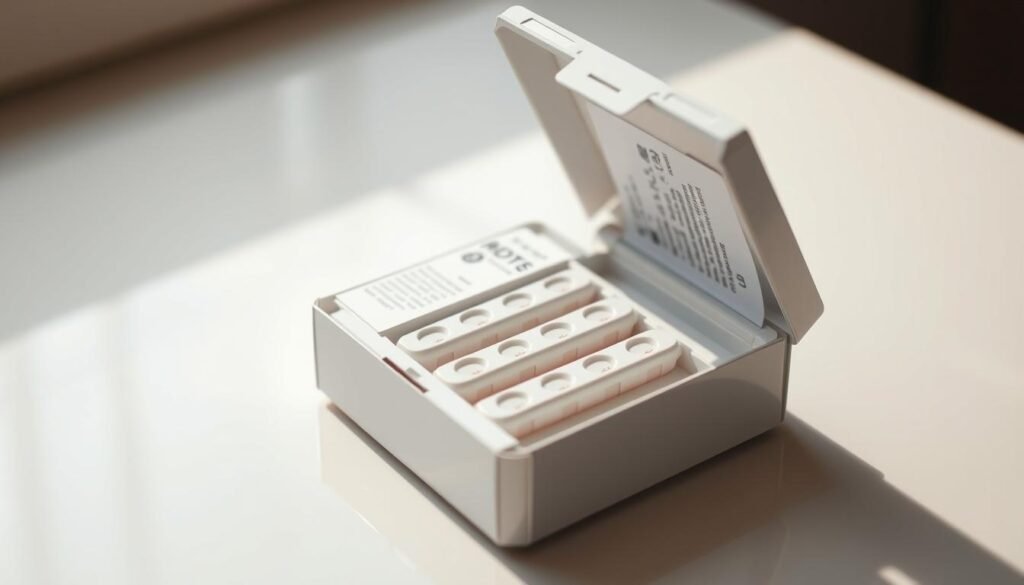
We mail the sealed sample with the supplied label and forms. Timely shipping and correct labeling preserve integrity and help the lab give a valid report. The lab looks for traces of blood and sends results to our provider or portal.
A positive screen is a signal, not a diagnosis. It typically leads to colonoscopy or further evaluation. Dietary or medication limits may be advised before some FOBT types to reduce false findings.
- Collect each subsample consistently to lower false negatives.
- Follow mailing instructions and ship quickly for a reliable report.
- Adhere to retesting intervals based on age and personal risk to catch changes early.
| Step | What to send | Next action |
|---|---|---|
| Collection | Stool card or container (sample) | Mail to lab |
| Result | Positive or negative | Positive → colonoscopy; Negative → routine retest |
| Follow‑up | Clinician review | Plan care and investigate non‑cancer causes like hemorrhoids |
When results arrive, we contact our clinician to plan next steps. Finding blood does not always mean cancer; further checks guide correct diagnosis and care.
Genetic risk tests at home versus clinical genetic testing
Saliva and cheek swab kits let people send DNA for report summaries that estimate risk for certain conditions. These consumer reports list selected variants tied to increased chance of specific diseases but are not diagnostic.
What consumer reports cover and their limits
Most reports highlight a small set of common variants and give relative risk numbers based on population data. Those estimates vary with ancestry and the reference group used.
Such summaries do not confirm presence or absence of a disease in our body. Clinical sequencing is broader and uses validated panels for diagnosis and family risk assessment.
- Proper collection (saliva or cheek swab) and secure sealing preserve sample quality.
- Data privacy and secure portals matter; store or share reports responsibly.
- Uninformative or uncertain findings are common and need counselling to avoid misinterpretation.
| Feature | Consumer reports | Clinical testing |
|---|---|---|
| Scope | Selected variants | Comprehensive panels |
| Use | Risk estimates for people | Diagnosis and medical decisions |
| Next steps | Discuss with clinician or genetic counselor | Confirmatory testing and management |
If a report shows elevated risk, we should consult a provider or genetic counselor recommended by our department health guidance. Lifestyle changes, increased surveillance, or clinical confirmatory tests may follow, but treatment decisions should never rely only on consumer reports.
Regulation and quality signals to look for before we buy
Before we open a kit, a few quick checks help us pick products that meet clinical standards and reduce user error.
Why authorised products and clear steps matter
Choose kits that show regulatory approvals and clear labeling. Authorization means the maker submitted data on analytical and clinical performance, so we gain confidence in the result and the wider quality framework.
- Check packaging for approval marks, expiry dates, lot numbers, and support contacts before purchase.
- Read the instructions fully before you begin and keep them while we carry out the procedure.
- Prefer brands that publish validation summaries and provide clear guidance on invalid results.
- Buy from reputable pharmacies or official brand stores to lower counterfeit risk and ensure proper storage in our system.
| Signal | Why it matters | Action |
|---|---|---|
| Approval marking | Shows independent review | Prefer approved test kits |
| Support contact | Helps resolve user issues | Save helpline details before testing |
| Storage instructions | Protects reagents | Follow temperature and humidity guidance |
Common causes of inaccurate home results and how to avoid them
Small mistakes in handling or timing can turn a reliable strip or cassette into a misleading sample. We will name the frequent pitfalls and offer clear steps to reduce errors.
Expired kits, storage and pre‑collection prep
Do not use expired kits or anything that shows damage. Heat and humidity degrade reagents and can spoil results.
Prepare the site on the body by washing and warming fingers. That helps produce a good blood sample for accurate reading.
Correct collection and timing
- Follow the collection instructions exactly and use only supplied items.
- Apply the right sample volume and place drops or swabs as directed.
- Read the device within the specified minutes; reading too early or late can invalidate the signal.
| Common cause | Why it matters | Quick fix |
|---|---|---|
| Expired or heat‑exposed kit | Reagents fail | Discard and replace |
| Poor collection technique | Insufficient sample | Prep hands; repeat collection |
| Timing errors | Faint or false lines | Set a timer for reading minutes |
Organize your workspace, label components, and photograph results within the reading window when allowed. Seek clinician advice before changing medicines or acting on borderline results; repeat testing when instructions ask us to do so.
At home blood test accuracy
Good results depend on both the device and how we use it. Analytical performance varies a lot by target and maker.
Some markers, like glucose, have mature consumer systems and predictable ranges. For those, meters and strips often give readings close to clinic values when we follow instructions.
Other analytes still perform best in lab settings. Mail-in kits processed in accredited labs can reach near‑clinical analytics. Yet pre‑analytical steps—collection quality, drying, labeling, and timely shipment—still affect final results.
- Interpret results with symptoms, history, and past measurements in mind.
- Repeat testing after technical errors, out‑of‑range values, or conflicting measurements.
- Keep device selection, storage, and strict instructions to narrow the gap with labs.
Build a routine: sample at the same time of day, follow prep steps, and log readings. This improves comparability of serial measurements and helps clinicians interpret trends.
Finally, do not change medications based on a single consumer reading. For critical choices, we seek clinical confirmation and professional review of our results.
| Scenario | Typical outcome | Recommended action |
|---|---|---|
| Mature consumer marker (e.g., glucose) | Close to lab when technique is correct | Use routine checks and periodic lab comparison |
| Complex analyte or low prevalence condition | Higher risk of discordant results | Confirm positives with accredited laboratory assays |
| Mail‑in panel | Lab-grade analytics possible; sensitive to collection/shipping | Follow collection and shipping steps; keep records |
| Unexpected or critical result | Potential harm if acted on alone | Repeat and seek clinician review before treatment changes |
When we should repeat a home test in a laboratory
We accept quick consumer results for screening, but some situations need lab confirmation and clinician review. Prompt escalation reduces risk and helps clinicians decide the next steps for care.
Red flags that need confirmatory lab testing
Repeat in a lab when a positive result is unexpected for someone at low risk, or when a reading would change treatment. Sudden unexplained changes or values suggesting severe disease merit fast confirmation.
Chronic conditions and routine validation
For ongoing conditions, pair daily or weekly consumer checks with periodic laboratory comparisons. That keeps long‑term management anchored to validated measures and guides therapy adjustments.
- Negative results with persistent symptoms or recent exposures should be repeated or checked with alternative diagnostics.
- Take photos, note device model, lot numbers, and reading time to help doctors assess reliability.
- Bundle follow-up panels when possible to reduce visits and speed decision making.
| Scenario | Why confirm | Recommended action |
|---|---|---|
| Critical value that alters therapy | Treatment change risk | Lab repeat and clinician consultation |
| Persistent symptoms but negative device result | Possible false negative or alternate disease | Repeat with lab assay or different method |
| Routine monitoring for chronic disease | Trend validation and dose decisions | Scheduled lab checks alongside home logs |
Contact a doctor when results are unexpected or when you consider changing medicines. Doctors can advise whether to repeat, escalate, or adjust monitoring and arrange confirmatory pathways that only clinical settings provide.
Time, cost, and care pathway trade-offs for Indian users
Saving hours on travel and waiting can be a real gain, yet confirmations may erase that benefit. Quick results give us immediate direction and reduce needless clinic visits when findings are normal.
We compare the direct cost of kits with typical lab panels. A single kit may be cheaper than a full panel, but repeat or confirmatory tests add hidden expense. Budgeting for one lab confirmation a year for chronic monitoring helps keep our records trustworthy.
Clear pathways matter. We can start screening at home and escalate to a clinic only when symptoms, reactive lines, or alarming readings demand it. That preserves scarce healthcare resources and guides timely action.
Families and caregivers benefit from planning. For elderly or mobility‑limited people, quick checks cut travel strain, yet caregivers should factor in the cost of confirmatory lab visits if results are inconclusive.
| Factor | Home collection | Clinic/lab follow-up |
|---|---|---|
| Time | Minutes to hours saved | Possible delay if appointments needed |
| Cost | Lower upfront; hidden repeat costs | Higher per visit; definitive results |
| Care pathway | Screen first; escalate by result | Diagnosis and treatment planning |
Buy only what we need and choose reputable sellers to avoid wasted kits and expiry losses. Integrate each result into our personal health system so clinicians can review trends and decide when repeat lab work is warranted.
Conclusion
Careful selection and correct collection let many consumer kits serve as useful screening tools. Over recent years, guidance from department health has pushed for authorised products and clearer lab pathways.
We find rapid kits give quick answers while mail‑in samples let labs add depth. For common conditions, a reliable blood test can inform next steps; for complex diseases we confirm in clinical labs.
Follow instructions, avoid expired kits, and document samples and test results. Pair consumer use with clinician review to manage risk and keep quality high.
